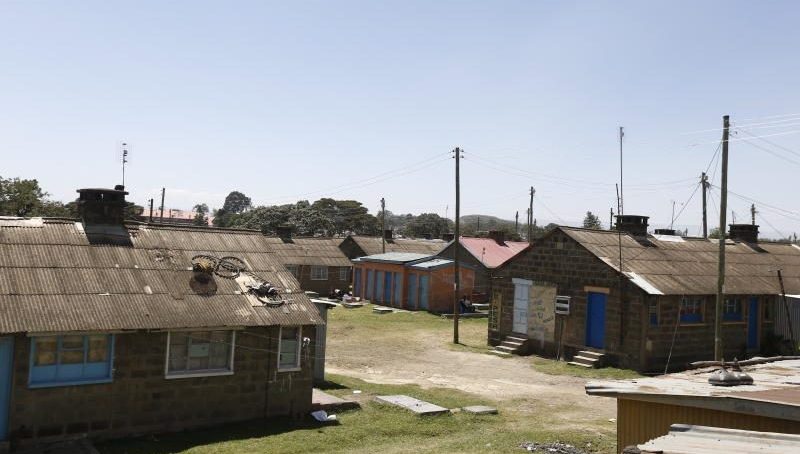
Kenya is in the process of sourcing funding from international donors that include the World Bank and the European Union to facilitate safe removal of harmful asbestos roofing from public buildings in the country.
The announcement follows a recent cabinet resolution, approving the removal of decades’ old and cancer-linked asbestos materials from government housing.
The ageing roofs, widely used in construction from 1960s through to 1990s, will be replaced with modern, environmentally friendly materials as part of the government’s broader green housing initiative.
Principal Secretary for Housing Charles Hinga said the exercise requires substantial funding and specialised expertise, making international support essential.
“The removal of cancer-linked asbestos roofs demands significant resources and highly specialised handling procedures and we are engaging international partners such as the World Bank and the European Union, to support this national health and safety effort,” said Hinga.
According to the principal secretary, he has more than 120,000 housing units across the country under his docket that were roofed with asbestos, posing long-term health risks to residents and construction workers if not handled properly.
According to recent corroborated research, asbestos exposure has been globally linked to diseases such as lung cancer and mesothelioma.
Speaking in Naivasha during a tree-planting exercise at Naivasha Boarding Primary School, Hinga underlined the government’s commitment to providing affordable, safe and sustainable housing for all Kenyans.
He pointed out that over 257,000 housing units are currently under construction nationwide, employing more than 300,000 Kenyans daily, under the Affordable Housing Programme. The principal secretary noted that government is building 147,000 student accommodation units to ease housing pressure in tertiary institutions.
“This noble programme is designed to restore dignity and provide clean, decent homes to more than seven million Kenyans currently living in informal settlements,” Hinga added.
Earlier this this year, the government kicked up a storm in the health and construction sectors when it gave to notice to occupants of asbestos-roofed houses to vacate. The notice issued by then Cabinet Secretary for Environment Adan Duale was criticised for its arbitrariness and potential health hazards it posed.
During the standoff, medical and building experts raised the red flag that Kenya lacks the requisite expertise, personnel and equipment to safely demolish the thousands buildings lined up for demolition to create room for implementation of President William Ruto’s controversial housing project – Affordable Housing.
Like the Jomo Kenyatta International Airport expansion that was shrouded in secrecy and fraught with public money spending loopholes, the implantation of the presidential directive on asbestos also raised concerns that the influential cabal in government was scheming to excise public land under the guise of asbestos removal and in the process unleash dangerous asbestos fibres that cause cancer.
Interviewed by Tell Media, South Africa-based construction expert, Prof A. A. Tulakhaba, warned that Kenya – especially in crowded urban informal settlements – is on the cusp on a cancer epidemic if the directive by Duale – then amplified by President Ruto – was executed without variation.
In Naivasha, Hinga observed that housing remains a global challenge with more than 1.6 billion people worldwide living in slums, inadequate shelter or homeless. He said Kenya has been recognised internationally for its commitment to delivering affordable housing, supported by the monthly housing levy introduced under the Kenya Kwanza Administration.
Prof Tulakhaba said, “Many countries around the world, including South Africa, have strict policies and regulations on how to handle asbestos. It starts with identification, removal and disposal. It is not just anybody who can handle asbestos, it must be done by experts who are trained and licensed.”
The view is shared by Director of London Institute of Railways, D Lawson Kamau Mbuguss, who said resident of crowded settlements like Nairobi’s Eastlands, Kongowea in Mombasa, Nyalenda in Kisumu or Langa Langa in Nakuru, are at a high risk of cancer. In London, such an exercise is planned for years and is executed at a high cost that involves evacuation of residents up over five kilometre radius from the site from site of the project.
“Asbestos removal is a hazardous process that must be carried out with strict adherence to health and safety regulations. The removal of asbestos roofing from a housing estate requires careful planning, professional execution, and proper disposal. Below is a detailed step-by-step guide, along with an overview of health and safety risks associated with asbestos removal,” Mbuguss says.
Hinga dismissed the politicisation of the Affordable Housing Programme, saying it is a transformative initiative, aligned with Kenya’s Vision 2030 and the Sustainable Development Goals (SDGs).
During the tree-planting event, the PS led students and government officials in planting more than 1,000 trees as part of government initiative for broader climate resilience agenda. He lauded President Ruto’s directive to establish 300 tree nursery sites across the country, supported by the Kenya Forest Service (KFS) and the Kenya Wildlife Service (KWS).
These nurseries, Hinga said, will contribute to the government’s ambitious plan to grow 15 billion trees by 2032 to restoration of degraded landscapes, enhance biodiversity and mitigate the effects of climate change.
“Climate change is a real and urgent threat and we have witnessed its devastating impact through prolonged droughts, floods, and the loss of lives and livelihoods,” said the PS.
These initiatives – from asbestos removal to tree planting – form is part of the government’s broader environmental and public health agenda. The Government’s dual focus on sustainable housing and environmental restoration reflects Kenya’s growing leadership in integrating green development into national policy and infrastructure planning.
- A Tell Media / KNA report / By Erastus Gichohi








